Review: HTC One (E8) for Sprint
Media
The E8 includes the basic Google Play apps, including Music & TV, Video, Books, Newsstand, and Games. You can use the Play Store to purchase or rent content and then consume it in the corresponding app. These apps are fairly mature and haven't changed much in the last year or so. They work just fine.
There's a fairly advanced stand-alone MP3 player for music that you've side-loaded or stored on a microSD card. It's quite full of features and can even pull down album covers and band data from online. It's much less of a pain for listening to music than the Play Music app. There's no corresponding app for sideloaded video, however. Anything you put on a microSD card will play in Google Play Movies & TV.
The E8 also includes NextRadio for listening to local FM radio stations. It's a bummer that it requires headphones, though. Sprint loaded the E8 with Spotify, NASCAR Mobile, NBA Game Time, as well as Sprint Music Plus and Sprint TV & Movies. Sprint's Music store is getting better. The latest version offers news as well as the latest hits and the user interface is much improved. Sprint TV & Movies offers a limited selection of live, streamed TV shows. Most of the content revolves around news and sports. If you want more channels and movies, you have to subscribe to the monthly service. Sprint charges $10 per month for access to a better selection of TV and a separate $6 per month to access a limited selection of movies.
Anything you play via the BoomSound speakers is going to sound good, but I was also quite pleased with the quality passed from the E8 through my favorite set of headphones. HTC uses a better headset amp in its phones than most other phone makers do, and this really helps with music playback. The E8 also supports the best stereo Bluetooth profile (aptX) for playing music back wirelessly. Bottom line, this phone makes media sound good.
The E8 doesn't have the M8's awesome TV remote control and TV guide app. Bummer.
Sharing is accomplished via DLNA. The E8 has an app called Media Share for connecting with and passing media to other devices, such as TV sets and home theater equipment. It's easy to use.
Camera
The E8's camera app can be opened from the lock screen or the home screen panels. There's no dedicated camera button. Alternately, the camera can be opened when the phone is tipped on its side with a press of the volume key. The camera opens swiftly.
The basic UI has several key elements. Most of the screen is used as a viewfinder and controls are kept to a minimum. Along the right edge of the viewfinder you'll see a thumbnail of your most recent shot, the shutter button, and a switcher tool that lets you jump between the basic shooting modes. On the left, you'll see a tool for adjusting the flash, as well as access to the full set of tools.
There's now one shutter button on the still photo viewfinder; you have to switch modes for video. The video mode does include a second button for snapping stills while recording video. There are six basic shooting modes: normal, video, Zoe, Selfie, Dual-Capture, and 360 Panorama (similar to PhotoSphere). Most of these are self-explanatory.
The Zoe mode has been altered a bit. It now shoots 1, 3, or 5 seconds of video along with taking a burst of corresponding photos. If you hold the button for more than 5 seconds, though, it automatically switches to full video mode and you can let go of the button. Speaking of which, video mode now lets you pause filming and resume while creating a single file rather than two. This means you can put multiple cuts in your video and have them automatically pasted together in the end result. The E8 can also record in slow-motion for those moments that deserve a bit more drama.
Dual-capture uses both the front and back cameras to capture images. The user-facing camera produces a small 16:9 rectangle that floats in the viewfinder. You can adjust the size of the box and reposition it at will, but you can't change the shape to a circle, or square. You can, however, reverse it, so the user-facing camera fills the viewfinder and the rear-mounted camera produces the small 16:9 box. The Selfie mode offers a countdown timer and lets you adjust all the same settings as the main camera, including filters, exposure, and so on.
These shooting modes are fairly easy to master and produce results that you expect. I still have trouble grasping the benefit and appeal of Zoes, but I like the dual-capture mode a lot.
The full set of tools for adjusting the camera is quite extensive. Press the three little dots in the lower-left corner and a control strip pops out across the bottom if the viewfinder. There are controls here that let you adjust ISO, exposure, and white balance on the fly, as well as apply one of 19 different pre-set filters (normal, sepia, grayscale, warm, cool, etc.). The tools offer access to a handful of scenes, which include night, HDR, simple panorama, electronic image stabilization, full manual control, portrait, landscape, backlight, text capture, and macro. The scenes should be easier to reach, especially HDR, which is among the most useful of the tools.
HTC has added a masterful trick to the E8 that, for many, may overcome the futzy scene controls: Owners can create and save their own camera profiles, and access them from the shooting mode switcher.
In all, the E8 offers the ease-of-use that many prefer (point and shoot), while still giving creative types plenty of options for exploring their artistic side.
Photos
One of the E8's major differences when compared to the M8 is the camera. The M8 has two cameras on the back, one of which captures perspective data for some fun after-the-fact effects. The E8 has a single camera. Further, the E8 has a 13-megapixel sensor rather than the M8's 4-ultrapixel sensor.
I think the photos look great. Focus, in particular, was excellent across the board. White balance and exposure are nearly always accurate, though you can see the strong reds in the flower below blew out the sensor a little bit. The E8 struggled more than the M8 with high-contrast subjects, but using the HDR tool generally resolved any issues. Since there are more pixels to work with, you're able to zoom in to a greater level of detail than with the M8. I zoomed way in on the loose gray rocks (below) and was able to see an incredible amount of detail - more so than I was when I took the same shot with the M8. The E8 may not have all the same fun options that the M8 does, but the camera is no slouch.
The user-facing camera - or selfie cam, if you prefer - has been bumped up to 5-megapixels. It has a wide angle of view, so you can cram a lot of friends (or background scene) in the shot, if you want. I'm no master of the selfie, but the images I captured looked pretty good despite crummy conditions and my poor compositional skills.
Video
Both the front and back cameras capture 1080p HD video. The main video camera shoots excellent video. The E8 did a great job keeping moving subjects in focus, and handled low-light situations pretty well, too. Colors look to be spot on as far as I'm concerned. The E8 is a fine video camera.
Gallery
HTC has done some really nice things with the gallery app. Photos are organized by timeline (segregated by date), by album (grouped by event), or location (grouped by geo-tagged data). These three main albums are arranged in vertical columns and you swipe side-to-side to switch between them. When viewing a certain album - let's say Timeline - the photos are arranged by date with the most recent photos nearest the top. Each day gets its own photo album, and the album shows a large cover image followed by thumbnails to let you see what's in that particular group of shots. Press any of these images and you'll dive into that specific gallery.
Individual images can be edited in a nearly unlimited way. For starters, you can crop, rotate, add frames, flip, draw on, and straighten the pictures. If you forgot to apply a filter while shooting the picture, you have an entirely different set of filters in the gallery that you can use to give your photo some flair.
Sharing options for standard images run the norm. It's easy to push photos to your friends via email or social networks. Photos can also be moved, renamed, added to slideshows, and so on.
Bluetooth
The E8 works with nearly all Bluetooth devices. I was able to pair it with my PC, my car, as well as Bluetooth headsets and speakers. As far as calls go, quality through my car's hands-free system was decent. I was pleased with volume and clarity. The E8 supports the aptX Bluetooth profile, which offers the highest-possible quality stereo music playback. I paired it with my favorite Bluetooth speaker and was happy to rock out for a while thanks to the excellent sound produced by the E8.
Browser
The E8 comes with both the generic Android browser and Chrome. The generic browser is "enhanced" with a new user interface thanks to the Lumen Toolbar. Basically, the Lumen Toolbar adds browser extensions that improve the performance of the browser itself when it comes to content, such as games and videos. It also adds easy sharing tools, newsfeed shortcuts, and recommendations. I didn't find it to be all that helpful, and thankfully you can turn it off.
Despite the Lumen Toolbar, both the stock browser and Chrome do a fine job of rendering web sites. Speeds with Sprint aren't great, though, unless you're surfing on Sprint Spark LTE. Browsing over Wi-Fi is much better. Beyond these two browsers, there are tons of options in the Google Play Store if you're looking for a different browsing experience.
Clock
HTC has included a useful clock tool on the E8. As noted earlier, you can pick the phone up and double-tap the screen to turn on the display. It shows the lock screen, and the clock is a big part of the lock screen. You can set the clock to just show the time, or to also include weather. It is a white, digital clock and cannot be customized. I wish it were just a bit bigger, but I can deal with it as is.
GPS
The E8 has Google Maps for planning and routing directions. Google Maps performed really well on the E8, thanks in part to its speedy processor. The E8 was able to pinpoint me consistently within several seconds no matter where I was or what sort of signal strength was available. Google Maps remains the premiere free mobile mapping software available, and it can help you find walking, biking, driving, and public transit routes between points, as well as street-level views of where you're going.
Sprint added TeleNav's Scout app as an alternate to Google Maps. Scout is free to use. It offers point-to-point navigation in addition to tons of information about local points of interest.
HTC Apps
There are several apps on board that bear HTC's name, including HTC Backup and HTC Guide. The Backup app comes with 50GB of storage on Dropbox for saving your device settings and content. If you're serious about picture-taking, it's well worth taking advantage of HTC's offer. The 50GB is free for a period of two years, and can store most any file type you want to sync. The HTC Guide is a handy tool that walks you through every aspect of using and adjusting the E8. It's worth a spin if the E8 is your first HTC smartphone.


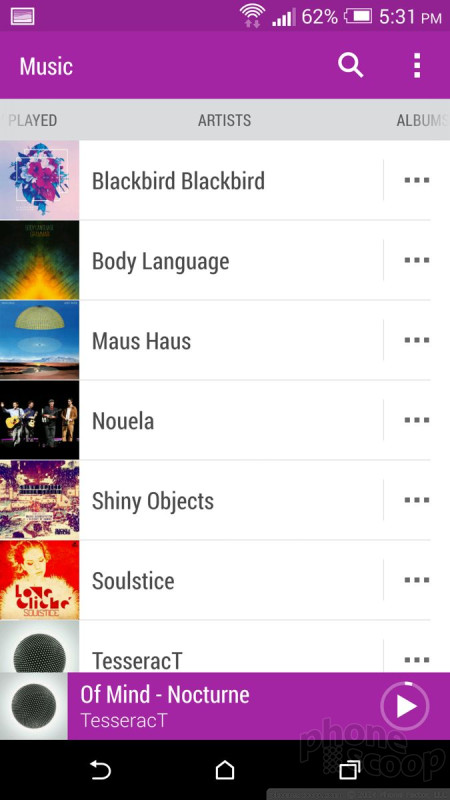




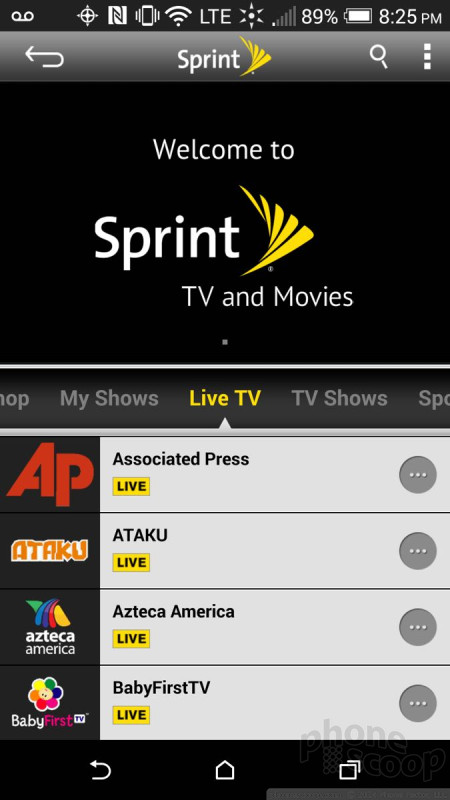



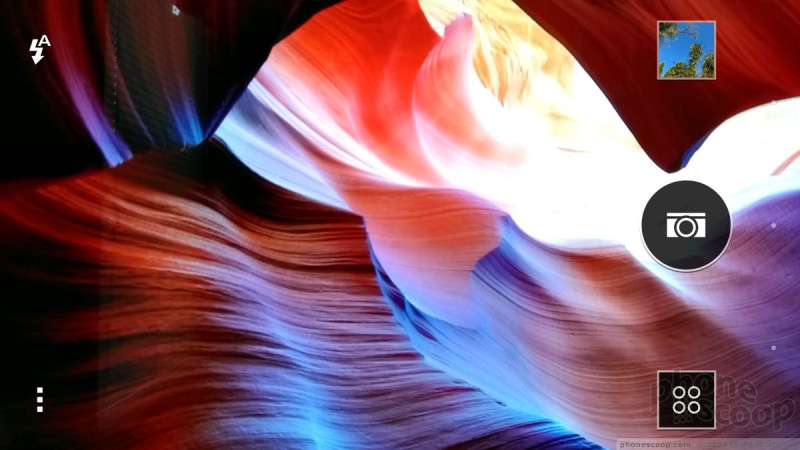





















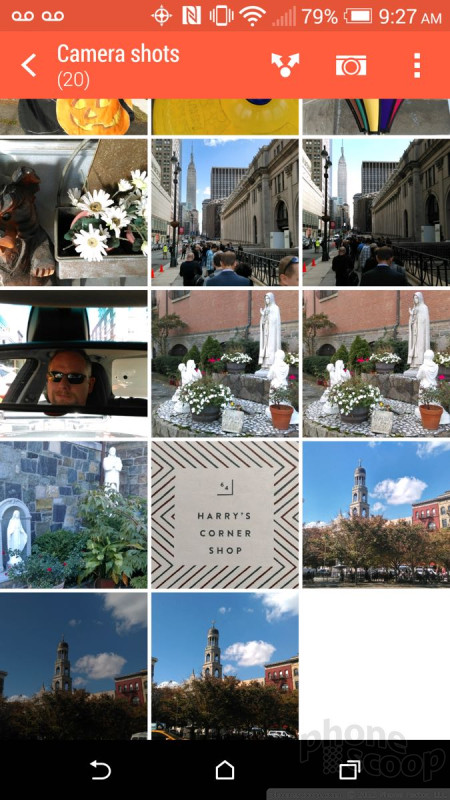




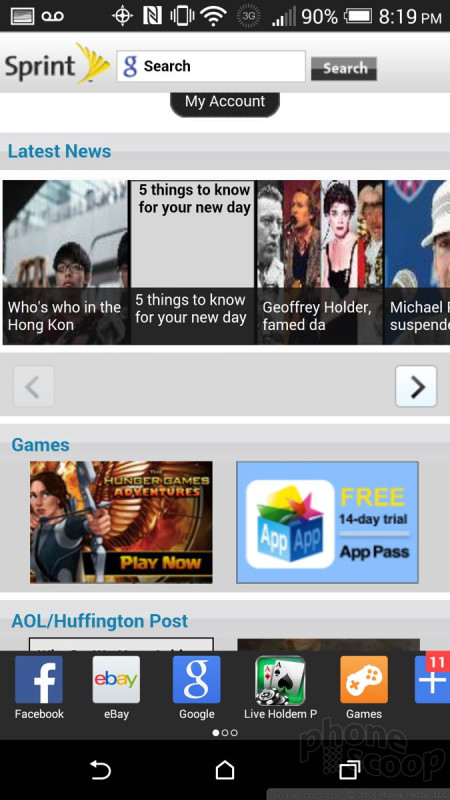




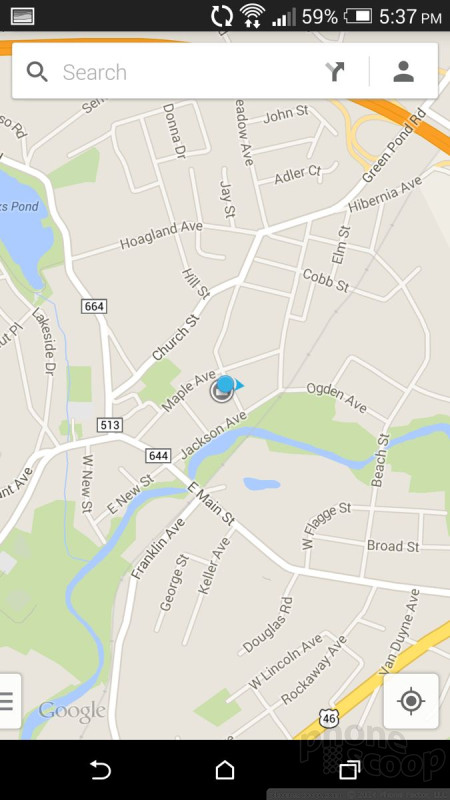




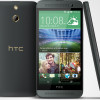 HTC E8 Is a Plastic M8 with the One mini 2's Camera
HTC E8 Is a Plastic M8 with the One mini 2's Camera
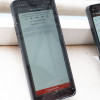 Qualcomm vs. Bullitt: Satellite Connectivity Comparison and Hands On
Qualcomm vs. Bullitt: Satellite Connectivity Comparison and Hands On
 Hands On with JLab's $30 ANC Earbuds
Hands On with JLab's $30 ANC Earbuds
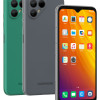 Fairphone 4 Comes to the US
Fairphone 4 Comes to the US
 HTC One (E8)
HTC One (E8)










